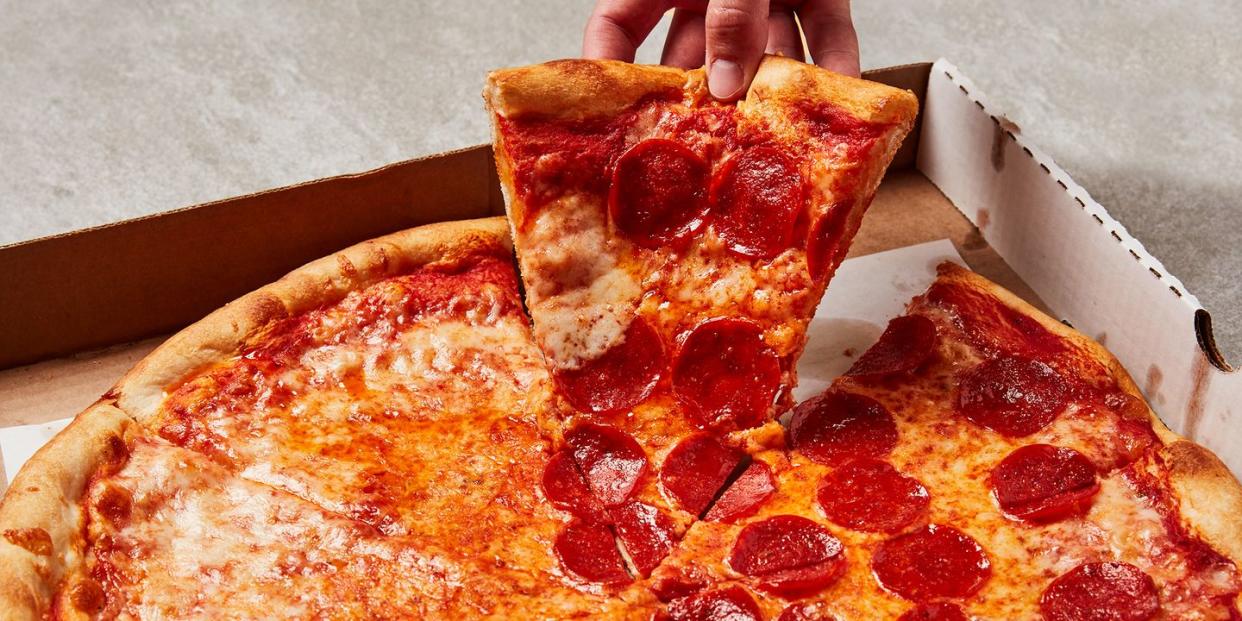Americans Still Eat Too Many Processed Carbs, But What About Cyclists?

A recent study published in JAMA: The Journal of the American Medical Association showed that Americans are consuming 42 percent of their daily calories from refined carbohydrates.
While results showed slight improvement in macronutrient composition over the course of 17 years, Americans should still focus on eating more whole grains, fruits, and vegetables, and avoid processed foods when possible.
Cyclists do need carbs to fuel their training, but timing carb intake to coincide with your workout is key.
These days, we see more health-conscious food options and menu items than in the past, from hearty whole grains to plant-based proteins. But a recent study published in JAMA shows that while the quality of Americans’ diets have improved slightly, we are still consuming too many processed carbohydrates and too much saturated fat.
For the study, researchers took a look at the eating habits and macronutrient (protein, carbs, and fat) intake of nearly 44,000 Americans over the course of 18 years from 1999 to 2016. They found that in the diet of a typical American adult, there were decreases in low-quality carbohydrates (think: added sugar) and increases in high-quality carbohydrates (primarily whole grains), plant protein (via whole grains and nuts), and polyunsaturated fat. However, the most recent survey cycle (from 2015 to 2016) showed that we are still getting around 42 percent of our daily calories from low-quality carbs, 14 percent from added sugars, and 12 percent from saturated fat.
The findings show a moderate improvement in the diet quality of Americans over the past few decades, but do show that the progress made has not yet brought us to where we need to be, said Fang Fang Zhang, Ph.D. of the Friedman School of Nutrition Science and Policy at Tufts University told Runner’s World. “We are able to see how we did nutritionally over the past two decades—and where we need to improve.”
The 2015-2020 Dietary Guidelines for Americans recommends keeping intake of both added sugar and saturated fat to less than 10 percent of calories per day.
While packaged foods and drive-thru stops are convenient, the processed carbohydrates in these foods can take a toll on your health. Eating a diet rich in whole foods is essential for getting all the nutrients your body needs to properly function. And, research shows that balanced diets—those with fruits, vegetables, whole grains, and lean meat—help lower blood-cholesterol levels, blood pressure, and heart disease.
“While we did notice statistically significant trends in overall diet quality and a general shift toward Americans eating healthier, we still have a long way to go,” Zhang said.
Even for us athletes who need carbs to power our workouts, there is a way to fuel up without sacrificing the quality of your diet. The key is to time your intake of processed or refined carbs to coincide with exercise, explained Matthew Kadey, R.D. This means it’s okay to consume processed carbs like white bread or energy gels before, during, and immediately after a workout, but at all other times, it’s better to fuel your body with less processed options such as whole grains and whole fruits so that your body obtains the necessary nutrients it needs to support health and training.
If you are in the midst of high-volume training, you can add in more carbs to support this, said Kadey, by getting up to 65 percent of your daily calories from carbs. But when training volume lessens during the off season, your energy requirements are not the same, so you want to trim down your carb intake to about 55 percent of calories for most athletes.
To lessen your intake of saturated fat, Kadey suggests diversifying the types of proteins that you consume by adding in more seafood and plant proteins like legumes and avoiding processed meats.
And, when choosing food that’s seemingly healthy (think: granola or yogurt) be sure to check the labels.
“The key is to watch out for added sugars,” said Kadey. “Compare brands and look for those that list lower levels of sugar. For instance, plain yogurt can have three times less sugar than a fruit-flavored version. Granola can contain a surprising amount of sugar.”
[Find 52 weeks of tips and motivation, with space to fill in your mileage and favorite routes, with the Bicycling Training Journal.]
The results of this research weren’t all bad, though. While Americans still consume too many processed carbs, that number is down 3.25 percent over 17 years. Even though that sounds like a small amount, Zhang said even these small changes can have an impact.
The study authors hope the data is used to guide us in making better choices rather than focusing on what we are doing wrong. We can take this knowledge of our current dietary trends and apply it to our lives going forward.
And, it is important to note that the diets of older people and those with lower income or less education improved less over the past two decades than the diets of others.
The bottom line: “We all need to be more mindful when we are consuming carbohydrates and choose whole grains or fresh fruit whenever possible, versus convenience foods that often contain processed carbohydrates and added sugar, without the fiber and nutrients we get from healthier options,” said Zhang.
You Might Also Like

